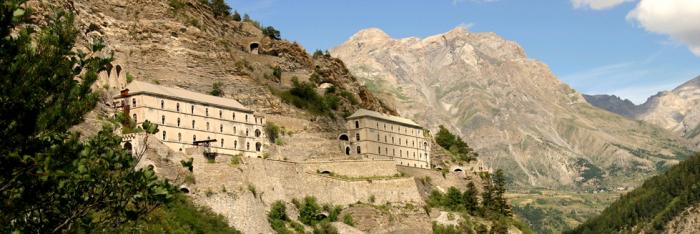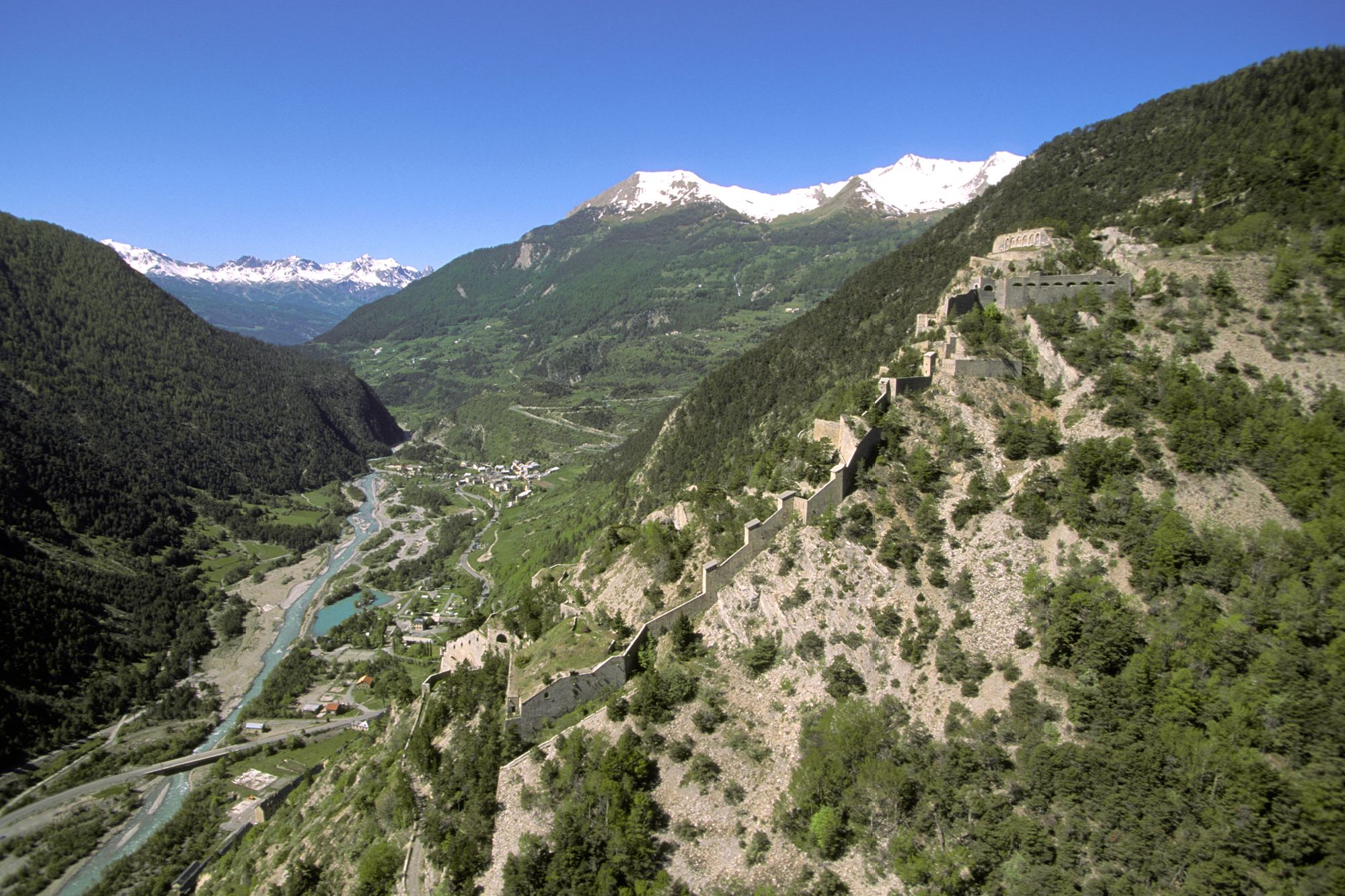Fort de Tournoux

Partie visible du Fort de Tournoux. Source : GNU Free Documentation License
Nicknamed the "19th Century Military Versailles" and compared to a miniature Wall of China or to a Tibetan monastery, this fort formed the nucleus of the strategic system of the Ubaye Valley.
Clinging to a rocky outcrop above Condamine-Chatelard and towering over the right bank of the Ubaye, the most impressive fort in the Ubaye valley extends over more than 77 metres of uneven ground. In 1709, the French installed an entrenched camp on the rocks around Tournoux, which was designed to defend against the Savoyards and Piedmontese. Construction of the fort was agreed in 1837 by General Haxo, the director of fortifications under the reign of Juillet. Work started in 1843, to be completed in 1866 and required the participation of some 1,500 workmen.
At the end of the 19th century, General Séré de Rivières ordered the strengthening of the defence system using higher forts culminating at an altitude of over 1,800 metres: particular examples are the construction of the batteries of Vyraisse, Mallemort and le Cuguret and the redoubt of Roche-la-Croix. Liaison tunnels were dug into the rock between the high parts of the fortress and a cable car - which has since disappeared - linked the high battery and the middle fort with the valley below. During the First World War, the fort accommodated Serb volunteers, who underwent military training before going into action and it later served as a place of imprisonment for German soldiers. In June 1940, the fort housed the command posts of the units that defended the Ubaye valley. It had a baptism of fire, as its artillery fire accompanied that of the more modern forts in order to stop the Italian troops.
In April 1945, the fort was the French base for the troops who seized back the forts of Saint-Ours and Roche-la-Croix from the Germans. The fort was used as an ammunition store until 1987. Designed like a staircase along a ridge, the fort de Tournoux is composed of an upper fort and a middle fort, linked by a winding road. The upper fort is a square-shaped building and has a tunnel leading to a double caponnier. The scarp has vaulted casemates.
Access to the middle fort is through a fortified entrance with a wooden bridge. It comprises an officers' wing and barracks on the earth platform above the bastions, and is remarkable for its barrack rooms accessed by long external walkways attached to the rock. Troglodyte premises used for logistical purposes were built inside the excavated caves. The middle fort was completed with a casemated battery in 1934. Nicknamed the "19th Century Military Versailles" and often compared to a miniature Wall of China or to a Tibetan monastery, this majestic construction clinging to a steep slope has been the nucleus of the strategic system of the Ubaye valley since the middle of the 19th century.
The fort de Tournoux and the principal forts of the Ubaye valley are open to the public. Guided tours are regularly organised in season. Access to Barcelonnette, the heart of the Ubaye 85 km from Digne-les-Bains, via the D 900. 100 km from Briançon via the N 94, and then the D 954 (via Savines-le-Lac) and the D 900. Links Tourist centre of the community of towns of the Ubaye. 4, avenue des trois frères Arnaud 04400 Barcelonnette Tel. + 33 (0) 4 92 81 03 68 Fax + 33 (0) 4 92 81 51 67 e-mail: info@ubaye.com

The fort de Tournoux. Source: ECPAD
Practical information
4530
Saint-Paul-sur-Ubaye
04 92 81 03 68




